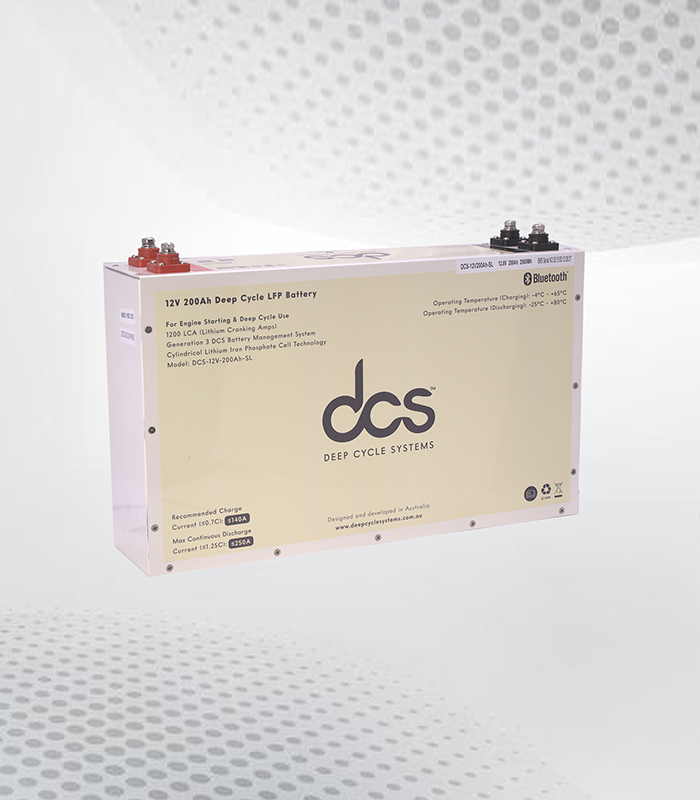The Holden Astra is renowned for its reliability and performance, but like any vehicle, it requires maintenance and occasional upgrades to keep it running smoothly. One crucial component of Astra’s climate control system is the fan blower motor, which circulates air within the cabin. An efficient Holden Astra Fan Blower Motor ensures you stay comfortable regardless of outside weather. This blog post aims to provide you with essential tips for upgrading this vital component so you can enjoy a better driving experience.
Understanding the Role of the TS Astra Fan Blower
The fan blower motor in your Holden Astra plays a vital role in the vehicle’s heating and cooling system by drawing in outside air or recirculating cabin air and distributing it through the air vents. This component is not just about regulating temperature; it also significantly contributes to maintaining good air quality within the car. The blower motor helps clear fog from the windows, ensuring visibility during colder or more humid conditions, and provides the passengers with a constant flow of fresh air. By doing so, it helps create a comfortable and safe driving environment.
In most Holden Astras, the fan blower motor operates through different speed settings, allowing you to control the intensity of the airflow. The motor works with other parts of the climate control system, such as the air conditioning unit and the heater core, to deliver the desired temperature inside the cabin. When you adjust your dashboard’s fan speed or temperature settings, you control the blower motor’s operation to achieve your preferred climate conditions.
Due to its constant use and exposure to various environmental factors, the TS Astra Fan Blower can wear out over time. Dust, debris, and moisture can enter the system and affect its performance, leading to a decrease in airflow efficiency or a complete failure. Regular maintenance, such as checking and replacing the cabin air filter, can help prolong the life of your fan blower motor. Understanding these operational details can assist you in identifying any issues early on, ensuring that the climate control system in your Holden Astra remains reliable and effective.
Common Signs That Indicate Your Fan Blower Motor Needs Replacement
Identifying the warning signs of a failing Holden Fan Blower Motor is key to maintaining your car’s climate control system. Here are some common symptoms to watch out for:
No Airflow:
If the vents are not blowing any air, regardless of the settings, this often indicates a blower motor failure. It signals that the motor is not working as it should.
Unusual Noises:
Strange sounds, such as grinding, squeaking, or rattling, coming from the blower motor area can suggest internal damage or debris accumulation within the motor.
Inconsistent Air Speed:
A blower motor that’s on its last legs may cause inconsistent airflow. You might notice the airspeed fluctuating without any changes to the settings, or it may only work intermittently.
Burning Smell:
A burning odour while the blower motor is in use is a serious red flag. It can indicate overheating or an electrical fault, which poses a significant safety risk and should be addressed immediately.
Weak Airflow:
If the air blowing from the vents is weaker than usual, even at the highest setting, it may be due to a failing blower motor. This can reduce the effectiveness of your heating and cooling system, making it harder to maintain a comfortable cabin temperature.
Blower Motor Only Works on Certain Speeds:
In some cases, the blower motor may only operate at specific speed settings, which can point to issues with the motor or the blower motor resistor.
Remember these signs to detect potential problems early and ensure your Holden Fan Blower Motor remains in optimal working condition.
Choosing the Right Replacement Fan Blower Motor for Your Holden Astra
A well-functioning fan blower motor is essential when it comes to maintaining the comfort of your Holden Astra. This component ensures that air circulates efficiently through the cabin, providing you with the desired temperature, whether it’s a hot summer day or a chilly winter morning. If your blower motor is failing, replacing it with the correct part is crucial to keep your vehicle’s HVAC system running smoothly.
Understanding Compatibility and Specifications
Before purchasing a replacement fan blower motor, verifying that the part is compatible with your specific Holden Astra model is important. Blower motors vary between model years and trim levels, so check your vehicle’s specifications. Look for the original equipment manufacturer’s (OEM) part number to ensure a perfect fit. This will make installation easier and guarantee optimal performance and longevity.
Quality and Reliability
Opt for a high-quality replacement blower motor, preferably from a reputable brand or the original manufacturer. Cheaper aftermarket options may save you money upfront, but they can be less reliable and may not last as long. Investing in a durable, well-built motor will save you time and money in the long run by reducing the likelihood of future repairs.
Installation Considerations
While some may choose to install the blower motor, having a professional mechanic handle the installation is often best. Proper installation ensures that the engine operates efficiently and minimises the risk of damage to other components in your HVAC system.
Tips for Maintaining Your New Mazda 3 Fan Speed Resistor
Regular maintenance is essential to ensure that your new fan speed resistor for the Mazda 3 performs optimally and lasts as long as possible. Here are some practical tips to help you keep your resistor in top shape:
Regular Inspections:
Periodically inspect the resistor for any wear, corrosion, or damage. This can help you catch potential issues before they become major problems.
Clean the Area:
Dust and debris can accumulate around the Mazda 3 Fan Speed Resistor and affect its performance. Use compressed air or a soft brush to clean the surrounding area and keep it free of contaminants.
Check Electrical Connections:
Ensure all electrical connections are secure and free of corrosion. Loose or corroded connections can cause intermittent functionality or complete failure of the fan speed resistor.
Avoid Overloading:
Using your fan system at its highest setting for prolonged periods can put extra strain on the resistor. To extend the life of the component, try to use lower fan speeds when possible.
Monitor Temperature:
Resistors can overheat if they are pushed too hard or if the blower motor is faulty. If you notice excessive heat or a burning smell, inspect the resistor and the blower motor to ensure everything functions correctly.
Use Quality Parts:
When replacing your resistor, opt for high-quality OEM or well-reviewed aftermarket parts. Cheap or poorly made resistors can fail prematurely and lead to further issues in your climate control system.
Maintain the Blower Motor:
Since the resistor works closely with the blower motor, keeping the motor in good condition will help the resistor perform better. Regularly check the blower motor for signs of wear and replace it if necessary.
Replacing Your Holden Fan Blower Motor
If you’re comfortable with basic mechanical work, replacing the fan blower motor in your Holden Astra can be a manageable DIY task. Here’s a step-by-step guide to help you through the process:
Gather Necessary Tools:
Ensure you have all the required tools, such as screwdrivers, pliers, and safety gear. Don’t forget the replacement fan blower motor itself.
Disconnect the Battery:
For safety reasons, always start by disconnecting the negative terminal of your car battery to prevent electrical shocks.
Access the Blower Motor:
Depending on your Astra model, you might need to remove the glove compartment or an access panel to get to the blower motor. Consult your vehicle’s manual for specific instructions.
Disconnect Electrical Wiring:
Carefully detach the electrical wiring harness connected to the old blower motor. Note the connections to ensure you can reconnect them correctly later.
Remove the Old Blower Motor:
Unscrew the fasteners, secure the old blower motor, and gently remove it from its housing. Keep the screws in a safe place for reassembly.
Install the New Blower Motor:
Place the new blower motor into the housing, align it correctly, and secure it with the screws you saved earlier. Reconnect the electrical wiring harness according to the notes you took.
Reconnect the Battery:
Once the new motor is installed and all connections are secure, reconnect the battery’s negative terminal.
Test the System:
Start your vehicle and test the climate control system. Check all speed settings to ensure the new blower motor is operating smoothly and efficiently.
Troubleshooting Common Issues with Mazda 3 Blower Motor Resistor
The Mazda 3 blower motor resistor is essential for controlling the fan speeds of your vehicle’s climate control system. However, like any component, it can encounter issues over time. Here are some common problems and troubleshooting tips:
Fan Only Works on One Speed:
This is a classic sign of a faulty blower motor resistor. If your fan only operates at one speed, it’s likely due to a failure in one or more of the resistor’s circuits.
Intermittent Operation:
If the fan works sporadically, check for loose or corroded electrical connections. Inspect the wiring harness and connectors for any damage or corrosion causing an inconsistent power supply.
No Airflow:
A completely non-functional fan might indicate a burnt-out resistor. Before replacing it, verify that the blower motor itself is in working condition and that the fuses and relays are intact.
Burning Smell:
When the fan is running, a burning odour can indicate an overheating Mazda 3 Blower Motor Resistor. This often occurs due to excessive electrical load or an obstructed fan, so ensure the blower motor is not blocked and is functioning correctly.
Visible Damage:
Physical inspection can sometimes reveal obvious signs of trouble. Look for cracks, burns, or melted components on the resistor. Any visible damage warrants immediate replacement.
Conclusion
Upgrading your Holden Astra Fan Blower Motor is a crucial investment for enhancing the comfort and safety of your vehicle. By selecting the right replacement motor, whether it’s an OEM part for guaranteed compatibility or a well-reviewed aftermarket option, you can significantly improve the efficiency of your car’s climate control system. Proper installation and regular maintenance, such as cleaning the surrounding area and checking electrical connections, will help ensure your new blower motor performs optimally. Additionally, staying vigilant for common signs of blower motor issues, such as unusual noises or weak airflow, allows you to address problems before they escalate, preventing potential discomfort and costly repairs.
FAQS
Q1: How often should I replace my Holden Astra Fan Blower Motor?
The frequency of replacing your Holden Astra Fan Blower Motor can vary based on usage and driving conditions. Generally, inspecting it every 50,000 miles or during regular maintenance checks is recommended. If you notice any common signs of failure, such as unusual noises or inconsistent airflow, consider replacing it sooner.
Q2: Can I replace the fan blower motor or hire a professional?
Replacing the fan Blower motor can be a manageable DIY task if you have basic mechanical skills and the necessary tools. However, if you’re unsure or uncomfortable with automotive repairs, it’s best to consult a professional mechanic to ensure proper installation.
Q3: What is the difference between an OEM and an aftermarket blower motor?
OEM (Original Equipment Manufacturer) parts are made by the same company that manufactured the original part for your vehicle, ensuring compatibility and reliability. Third-party manufacturers produce aftermarket parts, and their quality can vary. While aftermarket options may be more affordable, it’s important to research and choose reputable brands to avoid potential issues.
Q4: What tools do I need to replace the fan blower motor in my Holden Astra?
Basic tools required include screwdrivers, pliers, and possibly a socket set. Refer to your vehicle’s manual for specific tool requirements and safety guidelines.
| Related Business Listings |
| Contact Directory |
| Local Business Profiles |





